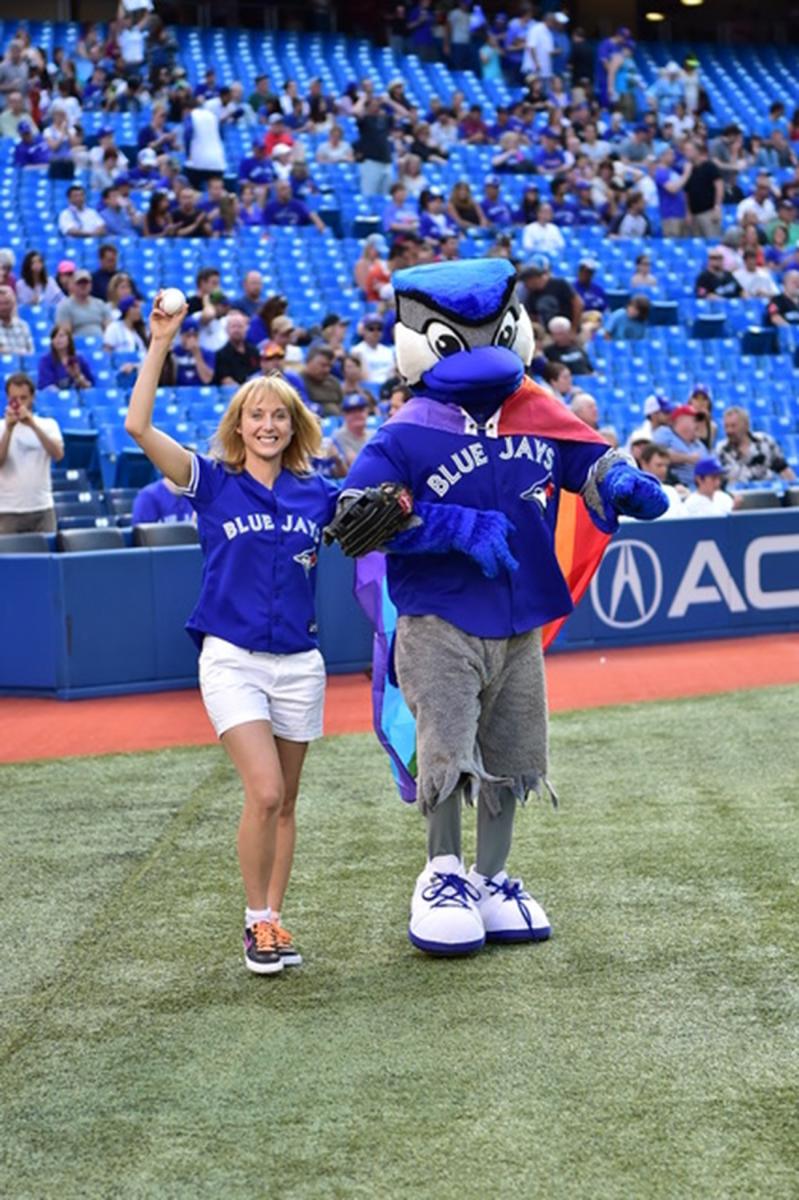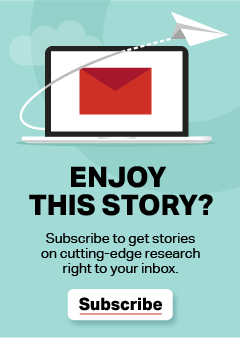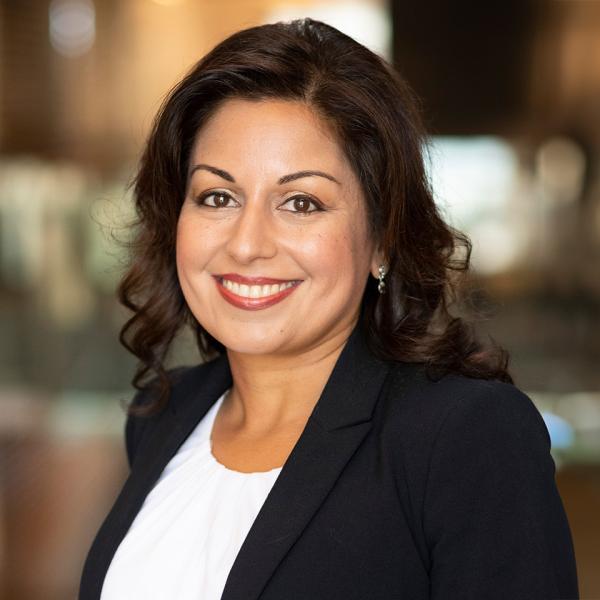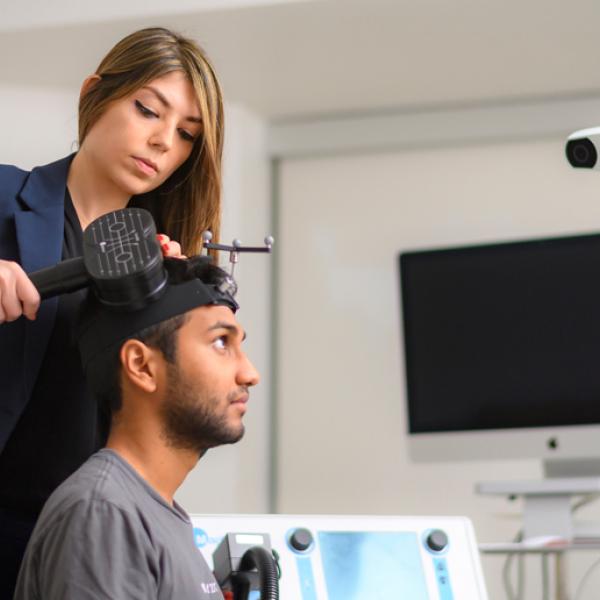
As the 2014 co-chair of WorldPride, an international event that promotes lesbian, gay, bisexual, transgender and queer issues, Shelley Craig threw out the first pitch at a Toronto Blue Jays game during Toronto Pride. Image courtesy of the Toronto Blue Jays |
When one thinks of “continuum of care,” online games and videos aren’t the first things to come to mind. But for Shelley L. Craig, who has created such a continuum for integrated support offline, these are all part of a vast range of initiatives she’s helping to create to help LGBTQ+ youth navigate the difficult and sometimes treacherous landscape of growing up queer.
Craig is a professor and researcher in the Factor-Inwentash Faculty of Social Work as well as Canada Research Chair for Sexual and Gender Minority Youth at the University of Toronto. In 2019, she embarked upon an initiative involving 40 international academic partners embracing a host of regional and international projects that fall under the International Partnership for Queer Youth Resilience initiative, or INQYR.
A seven-year undertaking, INQYR received a $2.5 million grant in 2017 from the Social Sciences and Humanities Research Council of Canada (SSHRC). In February 2020, the CFI contributed $80,000 to support a Digital Resilience MultiMedia Lab that will include a high-performance computer, video cameras and software editing equipment.
With that technology in place, says Craig, the lab is creating “resilience enhancement products” to provide LGBTQ+ youth tools to improve their own well-being and to advocate for LGBTQ+ rights in their communities. These could be as simple as videos of queer youth telling their own story, games that teach coping skills, or infographics to help advocate for a gay-straight alliance at school, or as sophisticated as an artificial intelligence-powered chat bot for LGBTQ+ youth.
Online resources for LGBTQ+ youth fill an important need, says Craig, especially in the absence of sufficient offline services and during the uncertainty of a pandemic that cuts them off from many of their support systems and typical coping mechanisms. “LGBTQ+ youth are going online and creating communities and building their own resilience. That has a positive impact on their mental health and wellbeing.”

An academic career built on making things better for LGBTQ+ youth
Craig’s advocacy is rooted in an academic career in social work that she describes as a “mix between helping people where they are, advocating for and with them and fighting to make things better in the systems they inhabit.”
Coming from an Ontario family of modest means meant that Craig always had to work full-time while pursuing undergraduate and graduate degrees in the United States. She worked in settings that complemented her studies, such as hospital emergency wards and a shelter for domestic violence survivors. It was in 1998, when she became director of an organization supporting LGBTQ+ youth that Craig became keenly aware of the dire lack of resources for this cohort — and decided to do something about it.








